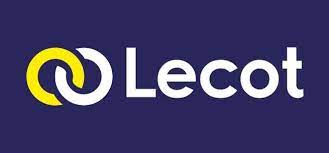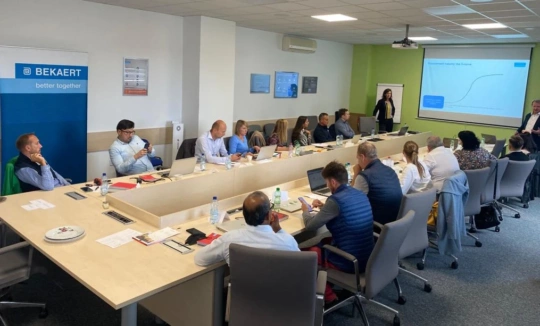
Lecot has a brilliant track record, currently with around 85,000 buying customers. These impressive figures suggest there is no immediate need for a commercial excellence trajectory.
That’s right, we’ve already come a long way. Our network of stores has expanded significantly and our revenue is continuing to rise steeply – largely thanks to our sales department’s dedicated efforts, among other things. The question is how to maintain this growth and prepare the organization for the future. When I started at Lecot, I tried to have as many in-house conversations as possible, despite the pandemic. I wanted to get a feel for how the organization was structured, where there were still opportunities, and what challenges everyone was facing.
Pieter Morisse
We want to tap into new sales opportunities by approaching our customers more as a team.
The conclusion of these discussions was that there is still a lot of growth potential. This expansion does not necessarily need to be synonymous with more stores, however. You can also achieve growth by approaching the customer in a different way.
There are still a lot of cross-selling opportunities, for example. Our sales representatives do everything they can to serve ‘their’ customers as well as possible using their own methods and expertise, which has worked brilliantly so far, but customer expectations are changing. In the future, we want to approach our customers more as a team, using a mix of expertise to help us tap into more new sales opportunities.
Pieter Morisse
CRM technology can be a great help in mapping out and realizing customers’ full potential – as long as there is a uniform approach. Otherwise, it becomes an expensive investment that yields little or no results. But achieving ‘one way of working’ like this is not easy within a large organization, such as Lecot. And that’s why they enlisted the help of external partner, Perpetos. The initial request was to support Lecot in preparing the tender and selecting the CRM supplier, and helping to clarify the objectives of the CRM tool and outlining a change trajectory for its implementation was an essential part of this.
CRM implementations often follow a very process-oriented approach, but sales is not a linear process.
CRM implementations are often led by IT people with no sales experience. They work in a very process-oriented way and think in linear processes, which then becomes the accepted way of working. But sales is not a linear process, and I also don’t want to create any barriers by getting rid of the way our people have always worked, and worked well, in the past. With Pascal Persyn, chief strategist at Perpetos, we brought in someone who knows sales inside out. He helped us to formulate answers to the core questions of where we want to go as an organization, and what the CRM system needs to be able to do to make this possible.
Pieter Morisse
Asking these core questions ensures that a CRM implementation starts from a future perspective rather than the existing situation. Morisse believes this is a crucial factor:
Rolling out a new CRM system takes time and money. So it needs to be future-proof if you want your investment to pay off, and this can only be achieved by starting from the ‘to be’ rather than the ‘as is’ situation. We didn’t just want to improve the current approach; we wanted to shift from thinking solely in terms of revenue to also considering potential – from ‘my’ customer to ‘our’ customer. This allows us to increase our performance in a structed way and get the most out of our commercial resources, and the new CRM system must be able to support us in this.
Creating this thought exercise meant we could integrate the ‘to be’ situation in the tender, which added lots of value. On Perpetos’ recommendation, we drew up the requirements in a very pragmatic way, with a concrete part on one hand and an open question on the other – giving potential suppliers the opportunity to show what they could do. And, because the Dutch-speaking aspect was important to us, we ultimately ended up with only two eligible suppliers. They both scored well on the first part, but the open demo strongly suggested Salesforce as the better partner overall. CRM is their core business, after all – and you can tell.
We opted for a Minimum Viable Product instead of a big bang.
There is still a long way to go between selecting a supplier and rolling out the new CRM, let alone optimizing its use. Perpetos’ expertise proved invaluable in this regard as well.
We got together to find a basic way of working that fitted in with Lecot’s current approach – a Minimum Viable Product, let’s say, rather than a big bang. This ensures we can bridge the gap between the ‘as is’ and the ‘to be’ more gradually, and avoid people leaving. Pascal had various conversations with sales directors to assess their drive and business, to help determine what an MVP should include. The input from these meetings was also important for putting together the pilot group, and this group then helped us to prepare and implement the rollout in stages. As well as spreading the investment over time, this also makes it easier to get people fully on board with the change process.
Pieter Morisse
2 important takeaways
The rollout is still ongoing, but Morisse already has two takeaways that can help other companies looking to set up a CRM project:
1. Be patient (but not too patient):
“Even though we opted for an MVP instead of a big bang, it still took longer than expected to get the pilot group fully on board. Ultimately, it’s about changing a mindset, and that’s always difficult. In this case, you have to get rid of the idea that CRM is a reporting tool that allows you to check whether your salespeople are using their time effectively every hour. It’s about customer contacts, so you have to coach your people much more from an opportunity perspective rather than an activity perspective. That’s why, in parallel with training on the new CRM tool’s functionalities, we also coached our sales leaders in changing their approach. And we worked at different speeds: some got on board straight away, and others needed a bit longer.”
2. Surround yourself with the right partners:
“The success from rolling out a CRM tool doesn’t come from going live with the software, but from everyone being able to use it effectively. And that’s why you need partners who feel involved – not just working towards launching the tool so they can check it off their list, but thinking together with you and regularly checking in along the way to get feedback and make adjustments where necessary.”






